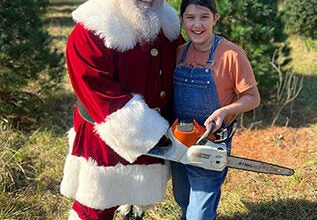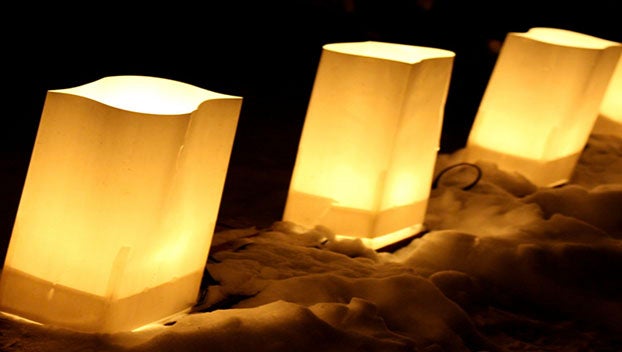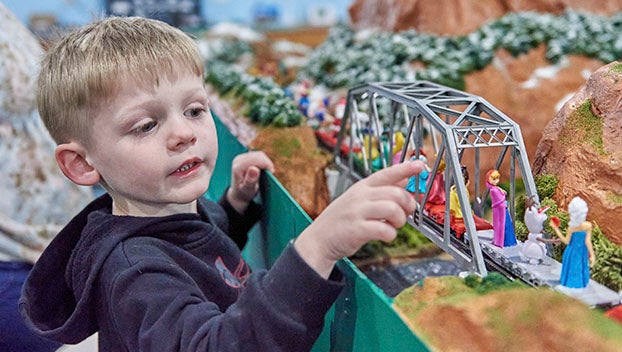A Look into the Past: Farmville’s fling with spring
Published 6:00 am Friday, April 24, 2020
|
Getting your Trinity Audio player ready...
|
There’s a tale told about a judge some 200 years ago in Farmville who happened to gaze out his courtroom window one warm April day.
The lordly dignitary, upon seeing a cluster of wild daisies that had just burst into bloom, stood up and announced, “You all may leave. I have just discovered that I have an important appointment — with spring!”
Although we usually don’t think of it that way, all of us have an appointment with spring. In nearly every society, spring means rebirth, renewal and regrowth.
Technically speaking, spring begins at the instant of vernal equinox — when there are exactly equal hours, minutes and seconds of daylight and darkness. For Farmville folks the vernal equinox will fall each year on March 19, 20 or 21, depending on the angle of the sun.
For thousands of years this astronomical event has been a signal for humans to “get ready.”
The arrival of spring and the days and weeks following were packed with social events and festivities. People in the past usually understood why these activities were symbolic of spring. Today we frequently continue the customs but have lost sight of their origins and meaning.
The rituals of Easter, for example, are rich with symbols of renewal. The very word “Easter” comes from the old English word “Eastree,” which means “toward the rising sun” — the direction ancient people would scan for the first light of dawn. Nowadays we simply glance at our calendars.
In the olden days, however, it was more complicated to know when Easter Day would arrive. Fortunately, in 1789 a group of clergy and church members got together in Philadelphia to solve the Easter Day dilemma. They drew up and published a ponderous book, “A Book of Common Prayer and Administration of the Sacraments and Other Rites and Ceremonies of the Church.” On page 880 the book describes “Rules for Finding the Date of Easter Day: the Sunday after the full moon that occurs on or after the spring equinox on March 21, a date fixed in accordance with an ancient ecclesiastical computation and which does not always correspond to the astronomical equinox. Easter Day may not be earlier than March 22 or later than April 25.”
Thank goodness they decided on the date. Now folks could gather all the traditional items to properly celebrate: colored Easter eggs, Easter baskets, Easter lilies and traditional Easter foods. There are special reasons for each of these.
Easter eggs, traditionally a sign of renewal, were stained with dyes, wax and twine. In days past, eggs were pierced and blown hollow so they could be preserved from year to year.
Easter baskets, the stand-in for nests that in real life held birds’ eggs or cuddly rabbits, were also an important part of the celebration.
Another animal associated with spring was the lamb, a sign of youth and purity and a centerpiece of many Easter meals. Ewes giving birth in early spring also served as a seasonal marker for people in the past — nature’s alarm clock as it were.
All of these spring and Easter symbols were an important part of celebrations in the 1800s in Prince Edward County. In 1896 Herbert Clarence Bradshaw described festivities in Farmville in his “History of Prince Edward County.”
Candy pulls, Easter egg hunts and hayrides . . . like the one Farmville young people took to Worsham. Mayor A. R. Venable entertained his class of Sunday School girls at the Farmville Presbyterian Church with strawberry picking in his “patch, and they then enjoyed them with cream . . . Another particularly festive occasion was an oyster supper served at eleven o’clock in the evening, and games continued afterward until a very late hour.
Another grand merriment in Farmville, and almost every town in Virginia in the 1800s, was the May Day Festival. Like Easter, May Day festivals symbolized renewal. In farming towns like ours, the May Day Festival was organized around a set of common themes. A May pole was set up in a public space to illustrate vegetation bursting forth from the earth. Garlands of flowers graced all participants, especially the May King and Queen, while young people, caught up in the gaiety of the occasion, celebrated the occasion by dancing around the May Pole.
Farmville was renowned throughout Virginia for its elaborate festival featuring students from the Farmville Normal School for Women, now Longwood University. Normal School students wrote, enacted and directed a drama of song and dance to be performed around the May Pole. This extravaganza, held each year in a natural amphitheater on the Longwood House grounds, attracted thousands of visitors. There were even special trains arriving in Farmville from Roanoke, Lynchburg Richmond and the Tidewater area.
May Day evening featured a Daisy Chain Race staged between young men and women who were linked together with easily broken daisy chains. The results of these contests were believed to foreshadow marital prospects of the contestants for the year ahead.
After the race, garlands of flowers were arranged in baskets to be left on the doorsteps of selected families. Good luck and prosperity as well as marriage and fertility were said to bless the houses where these baskets were placed.
Students at the Farmville Normal School complemented Daisy Day events with candy making made all the sweeter by the fact that dormitory rules did not allow cooking in the rooms. Miss Gay Ashton, who participated in this forbidden activity in 1899, even recorded a favorite recipe in her diary: 1 pound sugar, 1 pound nuts, 1 cup orange juice, 1 pound shredded coconut and 2 cups slice cherries.
While young ladies on High Street were consuming sugar-loaded candy, the Farmville Dahlia Show was underway on Main Street. Missie Bernier, who coordinated the show in 1920, observed: “The Dahlia Show is always one of the big social events of the year . . . The interest created in growing flowers has resulted in the beautifying of many lawns in and around Farmville.”
Taken together these spring activities had a common goal in mind: to restore the joy to everyday lives stunted by the limitations imposed by winter. With the coming of spring, there was gaiety and merrymaking — think parades, music, games, dancing, and feasting — not to mention that extra freedom for courtship and wooing and some license to violate the rules of normal behavior.
In other words, spring fling delights.
Scientifically speaking, the return of spring is based on the changing angle of the sun, but even modern eyes can see that spring and all its traditions do more than that. Spring renews the world — its plants and animals — and people.
So go ahead and revel in the merriment.
It’s April after all, and spring has sprung.
Dr. Jim Jordan taught at Longwood University for almost 40 years before retiring as the Board of Visitors Distinguished Professor of Anthropology.









